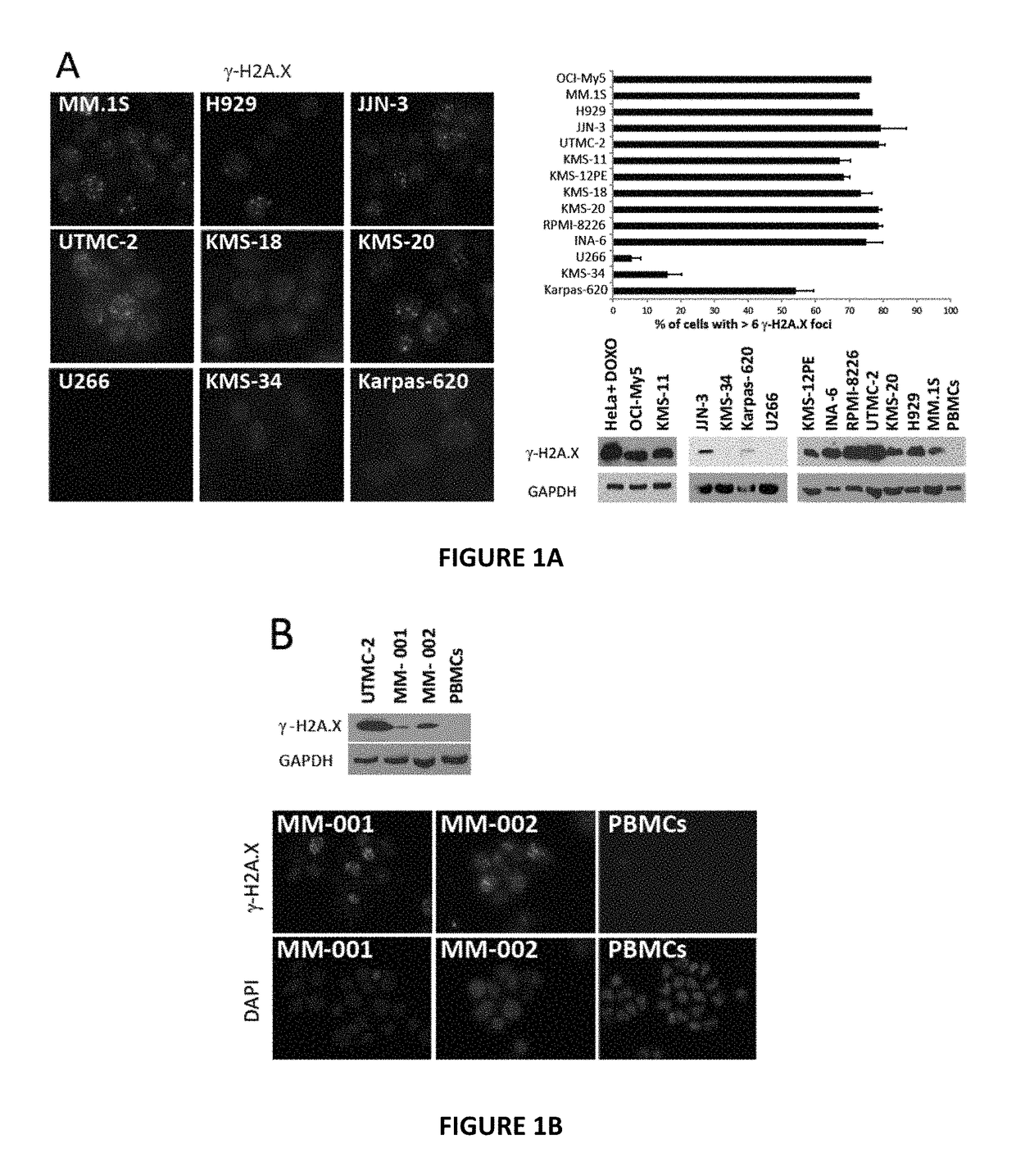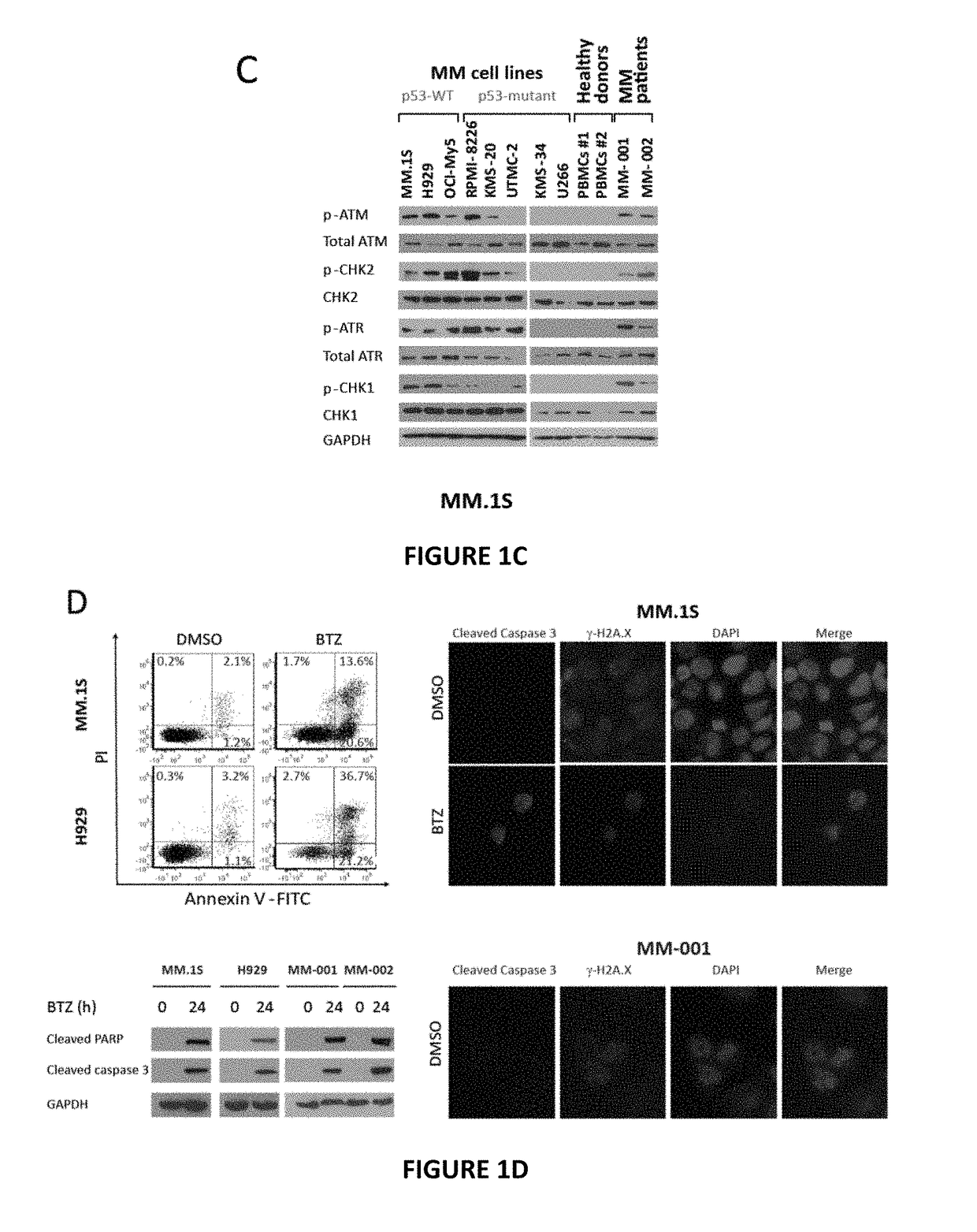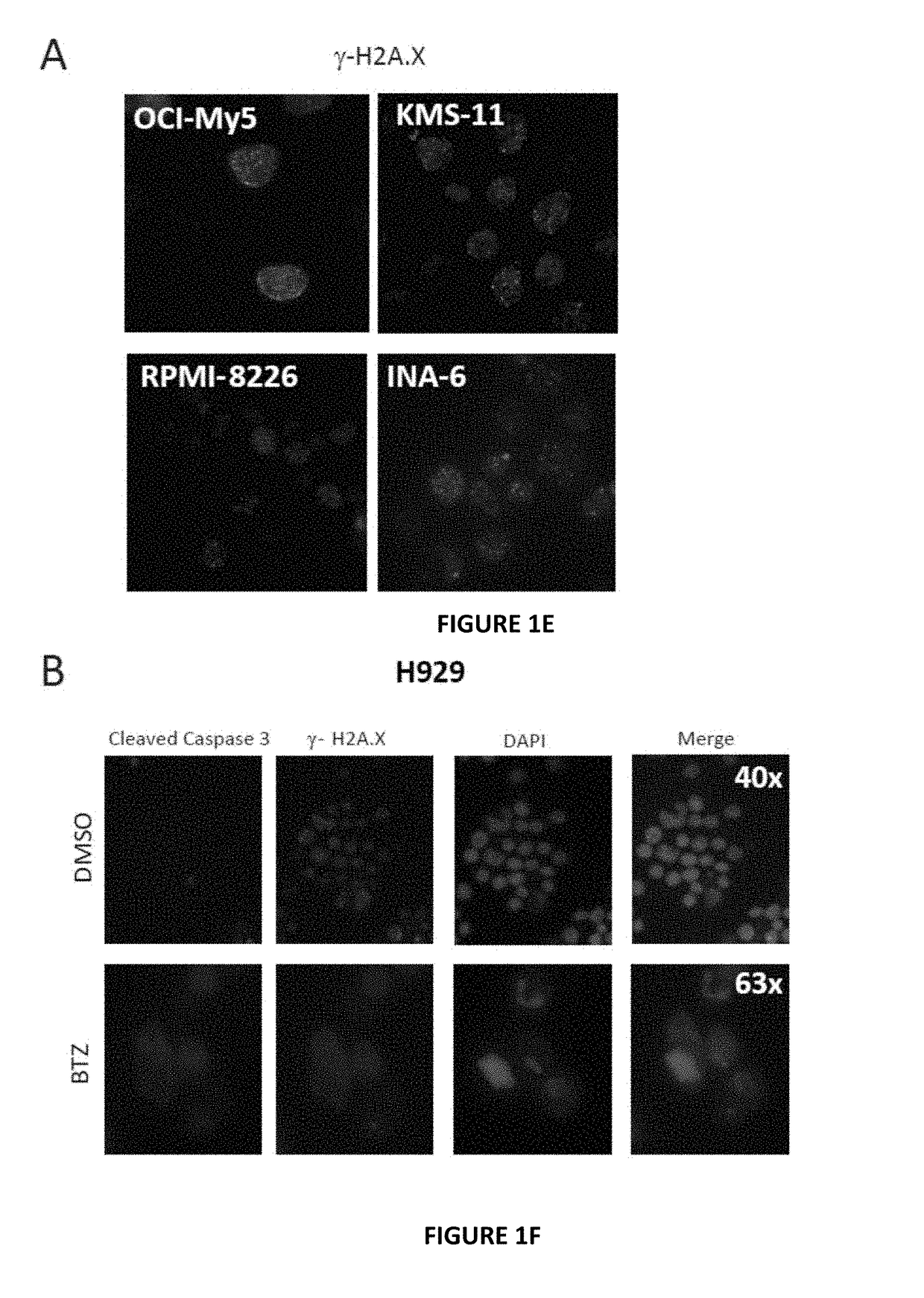Targets in multiple myeloma and other disorders
a multiple myeloma and target technology, applied in the field of hematopoietic disorders, can solve the problems of epithelial cancer model proposed, not true for hematological disorders, and achieve the effect of improving patient outcomes
- Summary
- Abstract
- Description
- Claims
- Application Information
AI Technical Summary
Benefits of technology
Problems solved by technology
Method used
Image
Examples
examples
Methods
Materials, Reagents and Cell Lines
[0252]All the antibodies and assay reagents were obtained from commercial sources. All the MM cell lines were purchased from American Type Culture Collection (ATCC), established in our laboratory or kindly provided by our collaborators.
Antibodies
[0253]YAP1 antibody (used for western blot purposes as in FIG. 4E) was obtained from Cell Signaling ID #4912 http: / / www.cellsignal.com / products / 4912.html
[0254]ABL1 antibody (used for both western blots and IHC): Santa Cruz, sc-131 (K12) http: / / www.scbt.com / datasheet-131-c-abl-k-12-antibody.html
Reagents
[0255]Bortezomib and doxorubicin were purchased from Selleck Chemicals LLC and Sigma, respectively; ATM inhibitor (Ku55933) and JNK inhibitor (SP600125) were obtained from Calbiochem. Imatinib, an ABL1 inhibitor, was purchased from Novartis. SKI-606 and HKI-272, both kinase inhibitors, were provided by Dr. Nathanael Gray (Dana Farber Cancer Institute, Boston).
Cell Lines and Culture
[0256]The MM cell lines...
PUM
 Login to View More
Login to View More Abstract
Description
Claims
Application Information
 Login to View More
Login to View More - R&D
- Intellectual Property
- Life Sciences
- Materials
- Tech Scout
- Unparalleled Data Quality
- Higher Quality Content
- 60% Fewer Hallucinations
Browse by: Latest US Patents, China's latest patents, Technical Efficacy Thesaurus, Application Domain, Technology Topic, Popular Technical Reports.
© 2025 PatSnap. All rights reserved.Legal|Privacy policy|Modern Slavery Act Transparency Statement|Sitemap|About US| Contact US: help@patsnap.com



